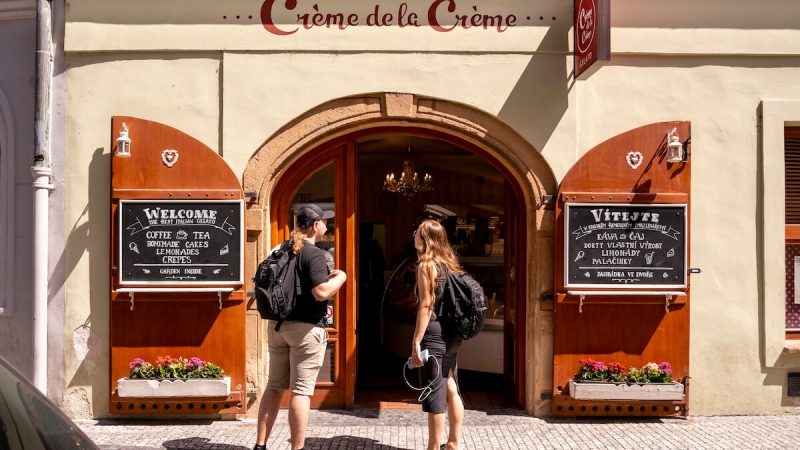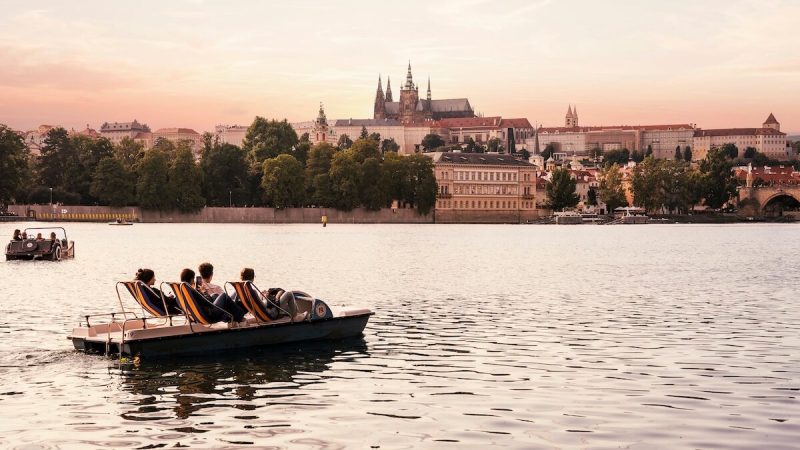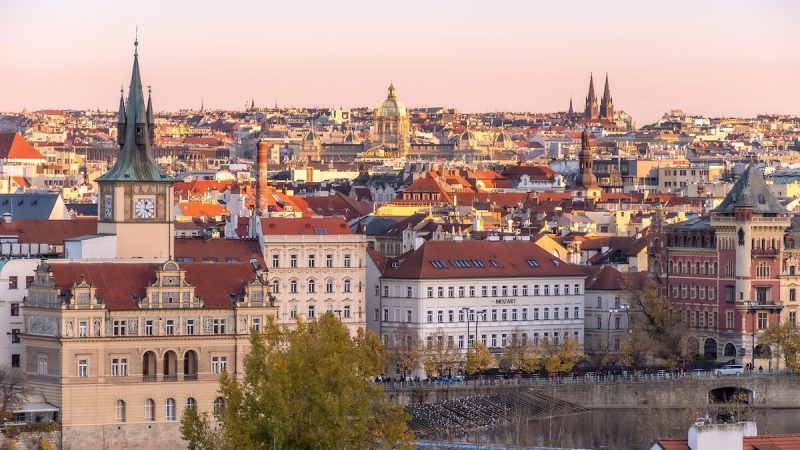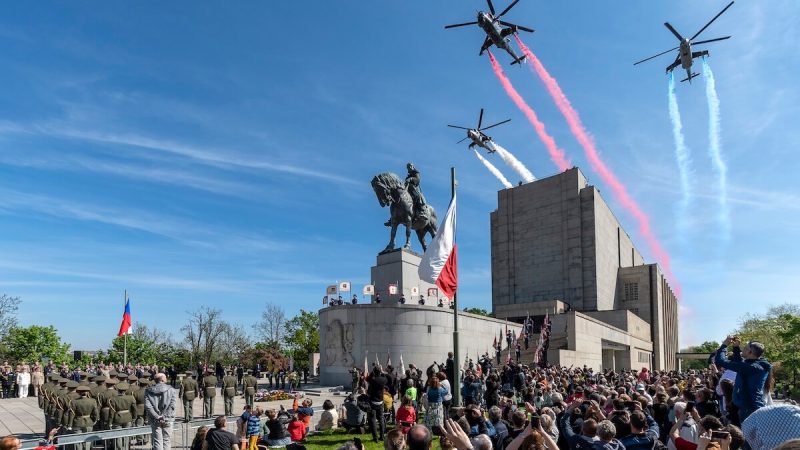Prague’s Top 7 Must-See Attractions: A Guide to the City’s Best Sights
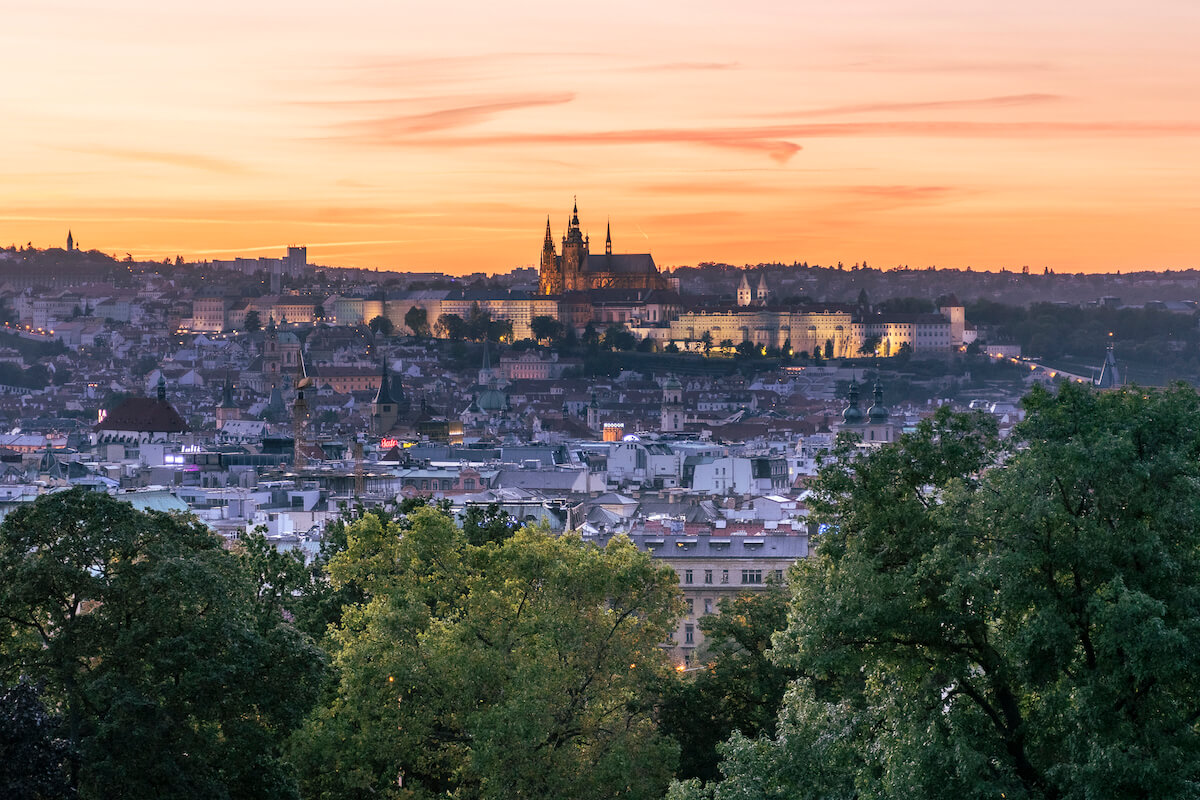
Prague is one of the most charming cities in Europe, attracting millions of visitors each year. It’s easy to see why so many people are drawn to this city with its rich history, stunning architecture, beautiful landscapes, and vibrant culture. Prague has a rich and fascinating history dating back over a thousand years. From its roots as a humble market town to its reign as the Holy Roman Empire’s capital, Prague has seen it all.
What are the iconic attractions in Prague?
Today, Prague is a vibrant, modern city that still retains its old-world charm. Its streets are lined with magnificent architecture, winding cobblestone alleyways, and lovely public squares. The city’s rich cultural heritage is on full display in its museums, galleries, and theatres, which showcase everything from classical to contemporary art.
Let’s take a closer look at Prague’s top 7 most famous attractions. From the iconic Charles Bridge to the impressive Prague Castle, I’ll guide you through the city’s most beautiful and must-visit sights. And as a local, I’ll give you all the insider tips and hidden gems that only the locals know about. So sit back, relax, and let me show you why Prague is a city that will capture your heart forever.
1. Prague Castle: A Gem for History and Culture Lovers
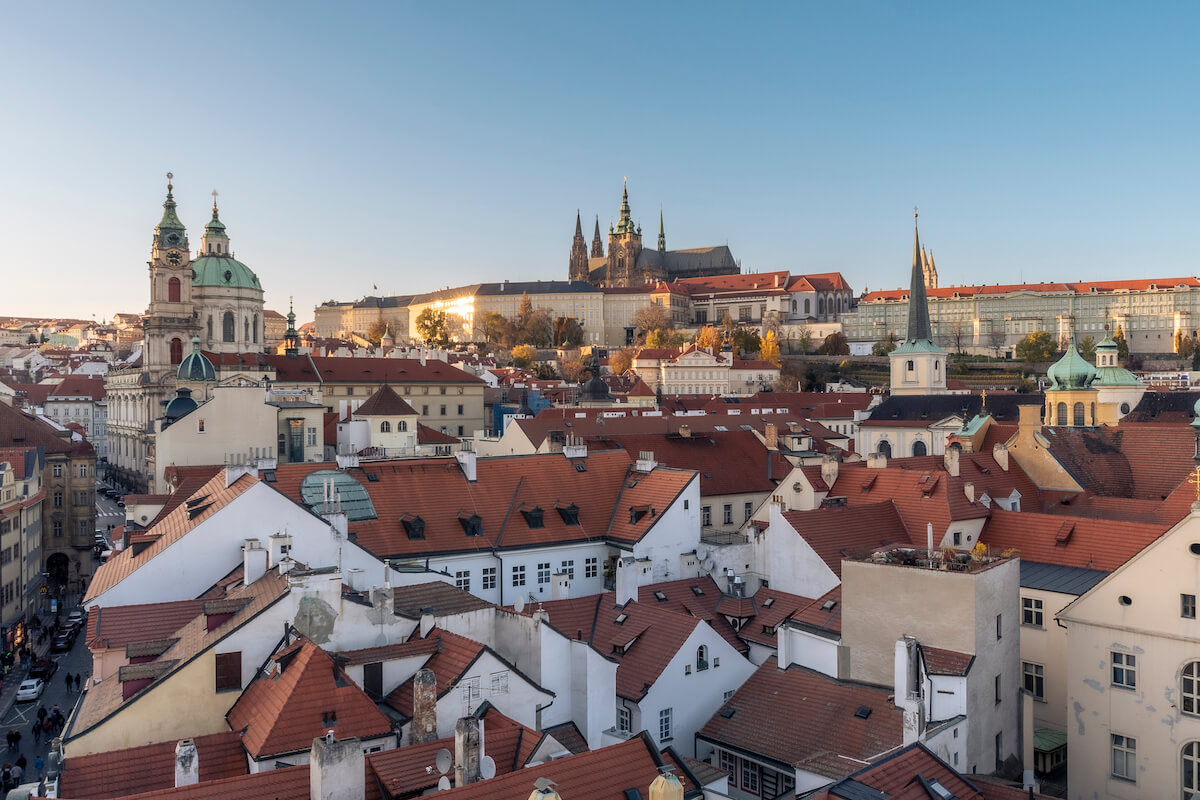
Prague Castle, located in the heart of Prague, is a historic landmark that attracts millions of visitors every year. With a history of over 1000 years, Prague Castle is the most significant and important symbol of the Czech Republic. For its rich history, stunning architecture, and breathtaking views, it’s a must-see destination for anyone who loves history and culture.
The castle, founded in the 9th century, is the largest castle complex in the world, according to the Guinness Book of World Records. It is also listed as a UNESCO World Heritage Site. It features a mix of Gothic, Renaissance, and Baroque styles, and is home to fascinating buildings and monuments like St. Vitus Cathedral, the Royal Palace, and the Golden Lane.
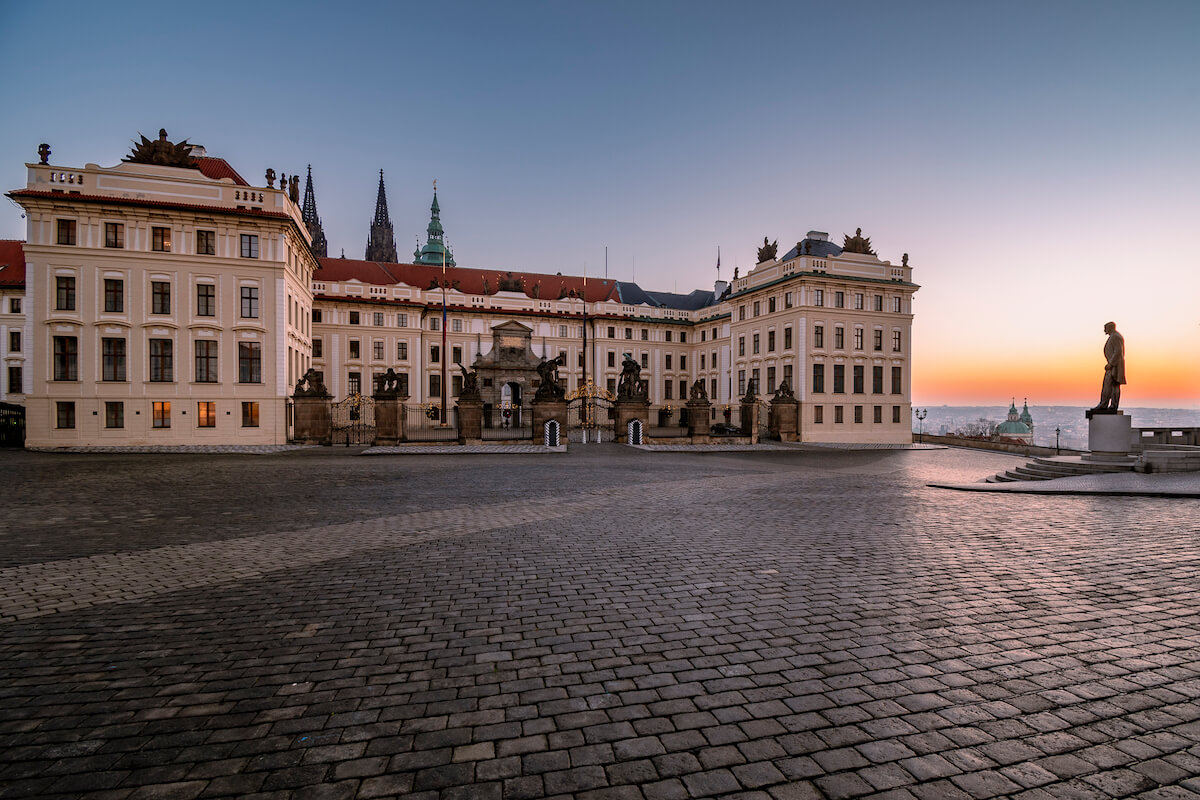
You can either take guided tours to learn about the castle’s rich history or explore the grounds on your own. I recommend taking a stroll through the courtyards, climbing the St. Vitus Cathedral tower, relaxing in the South Gardens, watching the Changing of the Guards ceremony, and admiring the view from Hradcany Square.
Local’s tip: Because Prague Castle is the city’s most visited attraction, I highly recommend you to plan your visit early in the morning to avoid crowds and delays at the entrance security checks.
The official website with opening hours and admission fees is available here.
2. Charles Bridge: Prague’s Most Beloved Landmark
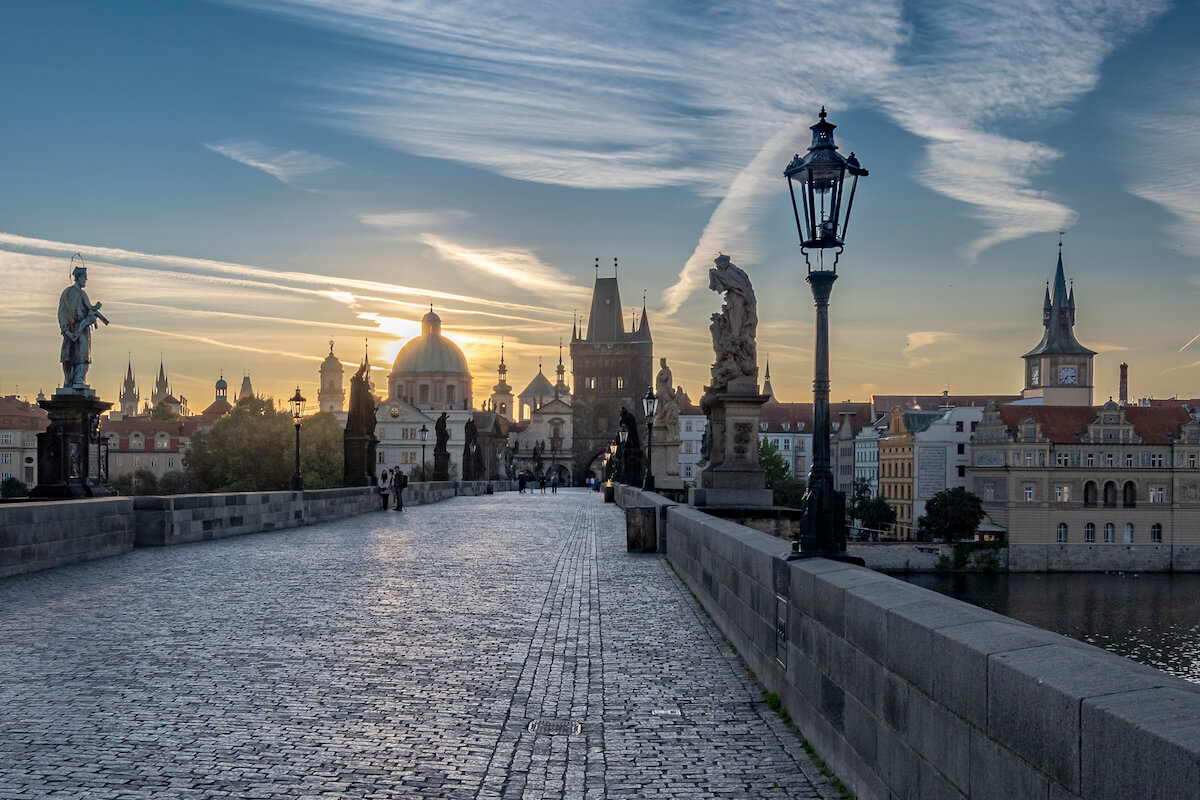
Charles Bridge is an iconic Prague landmark connecting the Old Town and Lesser Town neighbourhoods over the Vltava River. It offers stunning views of the city’s skyline, including Prague Castle with St. Vitus Cathedral and the Old Town Square.
The bridge is also rich in culture, with sculptures and baroque statuary, and serves as a hub for artists and street performers. Charles Bridge was built in 1357 and is a UNESCO World Heritage site.
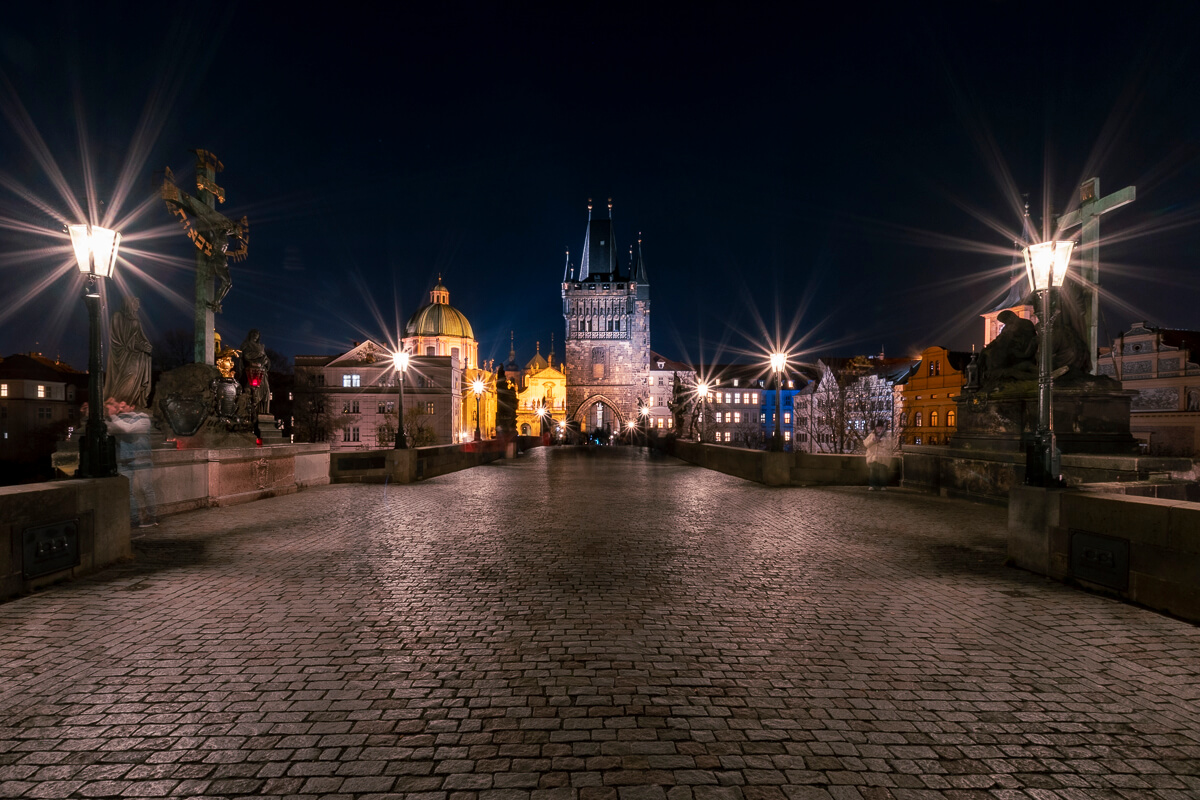
As you cross the Charles Bridge, you will pass through an alley of 30 mostly baroque statues that give the Charles Bridge an unforgettable atmosphere, especially after dusk. The route from the Old Town to the Lesser Town via Charles Bridge was part of the Royal Route, which future Czech kings took on their way to their coronation at Prague Castle.
Both sides of the Charles Bridge have guard towers worth visiting for stunning views of Prague. The gothic Old Town Bridge Tower is admired for its architectural and decorative details. The Lesser Town Bridge Tower is made up of two towers that are linked by a gate.
If you want to avoid crowds, and trust me, Charles Bridge can get super crowded, visit this special place very early in the morning at dawn or later in the afternoon after dusk. Not only will there be fewer people, but you will be greeted by a magical mediaeval atmosphere.
❤️ Please remember that leaving a love lock on Charles Bridge or anywhere else in Prague won’t bring you eternal love. It’ll just bring trash to Prague.
3. Old Town Square: Discovering Prague’s Iconic Square with Astronomical Clock
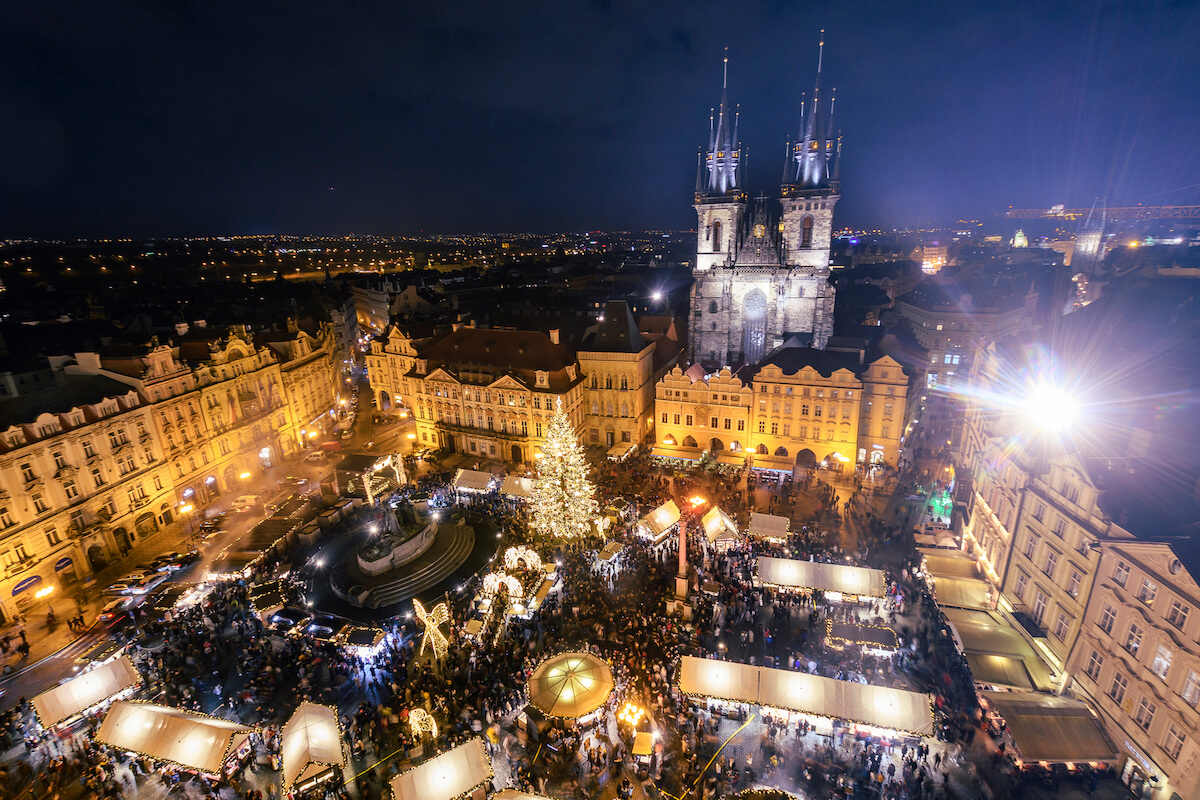
Welcome to the Old Town Square in Prague, where history and beauty come together. The highlight of the square is the Old Town Hall, a complex of 14th-century buildings that houses a 70-meter gothic tower offering stunning views of the city. The tower is wheelchair accessible with a cool glass lift.
The main attraction of the square is the world-famous Astronomical Clock, also known as the Prague Orloj. This medieval monument is the oldest operating astronomical clock in the world and features a procession of the Twelve Apostles every hour from 9 am to 11 pm.
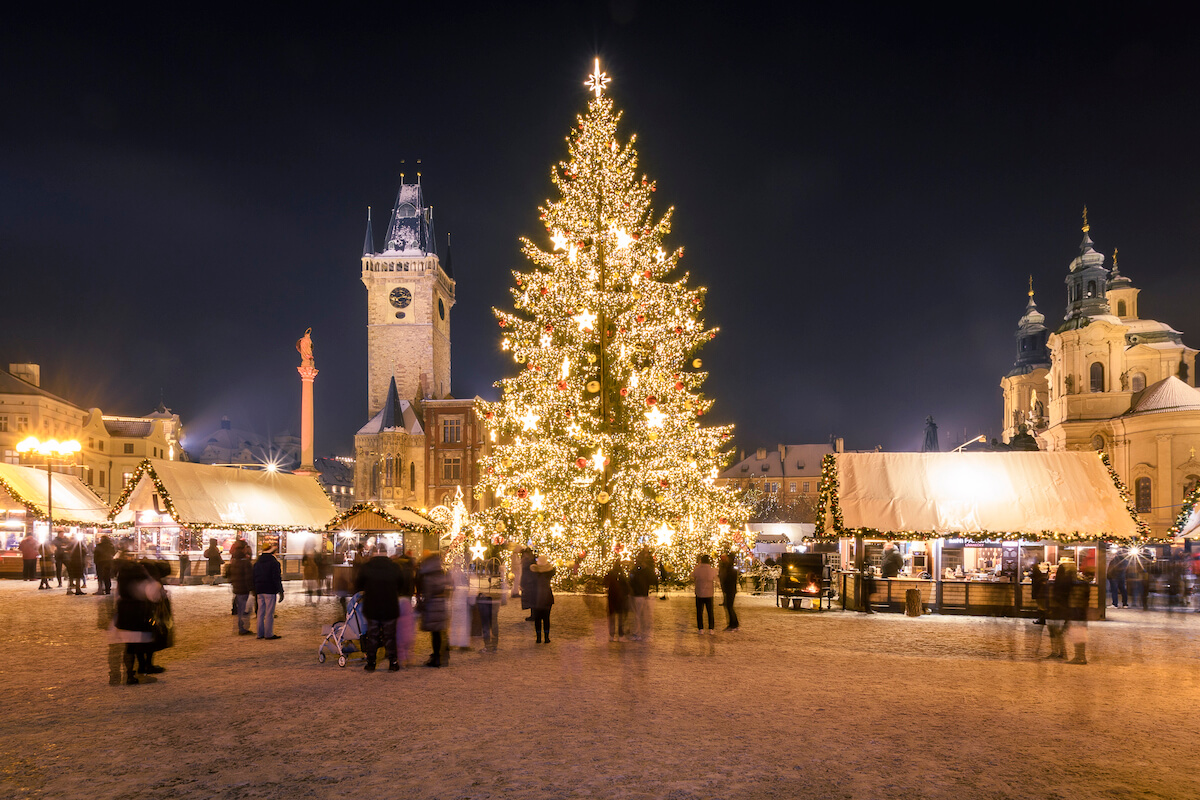
While visiting the Old Town Square, don’t miss the gothic Tyn Church and the baroque St Nicholas Church, the Jan Hus Memorial Statue, the Marian Column and Prague Meridian, the rococo Kinsky Palace, and the gothic House at the Stone Bell, which is one of the possible birthplaces of Charles IV.
If you visit during the winter, be sure to visit the popular Christmas Markets, which are deservingly considered as one of the most beautiful in the world. In the spring, there are the Easter Markets.
The official website of the Old Town Hall with opening hours and admission fees is available here.
4. Republic Square: The Iconic Municipal House, Powder Gate Tower, and much more
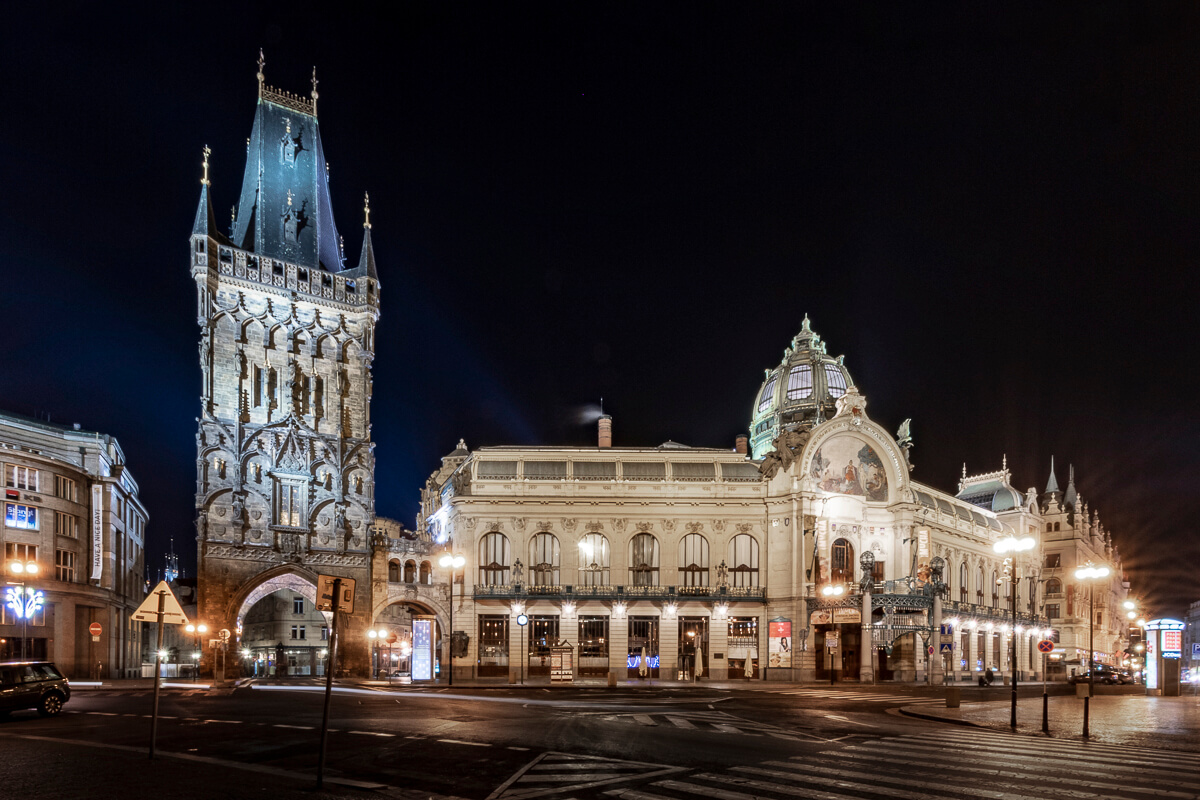
Don’t miss out on visiting Republic Square because there are several interesting buildings nearby. Municipal House and Powder Gate Tower, as well as the impressive functionalist building of the Czech National Bank, the Empire-style Hybernia Theatre, and the shopping mall Kotva built in brutalism style.
The Municipal House is a stunning example of Art Nouveau architecture in Prague. It was built on the site of the former King’s Court. The grand structure houses a Café, French and Pilsen restaurants, American Bar, Mayor’s Lounge, and Smetana Concert Hall. If you are an Art Nouveau enthusiast, go check out the perfect Art Nouveau interiors decorated by leading painters and sculptors.
Powder Gate Tower (Prasna brana) is one of the few surviving mediaeval Prague gateways and a symbol of the city’s rich history. The late Gothic tower was built in the 15th century, and its current look was inspired by the Old Town Bridge Tower. The 65-meter-tall building is unique for its stone sculptures of kings, Czech patrons, and saints.
The Tower originally served as a fortification and the start of the Royal Route, a path travelled by Czech kings on their way to their coronation at Prague Castle. It eventually faded and was used to store gunpowder, hence its current name. Climbing the spiral stairs with 186 steps will reward you with breathtaking views of the city from its 44-meter-high lookout gallery.
5. Vysehrad Castle: Explore the Wonders of a Historical Fortress

Vysehrad Castle is a must-see attraction in Prague because… Check it out and you’ll see why. Vysehrad is a historical fortress associated with Czech history and mythology. It was founded in the 10th century on a Vysehrad hill, on a ledge above the Vltava River. Vysehrad is known for its well-preserved fortifications. A walk around the walls provides stunning views of Prague.
Its park area conceals architectural treasures such as the Romanesque precious Rotunda of St. Martin, the Neo-Gothic Church of St. Peter and Paul, the national burial ground Slavin, historical statues, vineyards, an underground casemate with originals of some of Charles Bridge’s baroque sculptures.
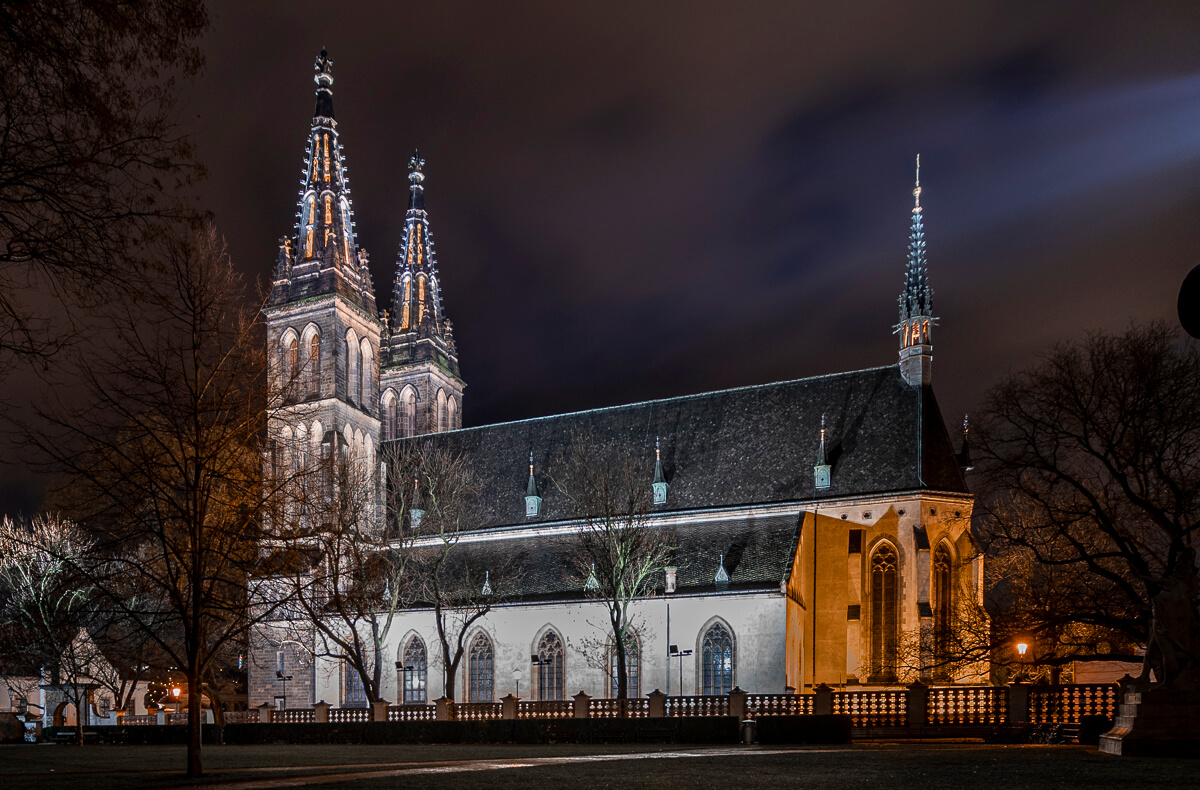
Vysehrad is less crowded in general, making it an ideal place to relax in the park or have a picnic. Overall, visiting Vysehrad Castle is an excellent way to learn about Czech culture, history, and art while enjoying beautiful views of the city.
The chimes of St. Peter and Paul’s Basilica plays every hour one of the dozens of songs they have in their repertoire, such as Ach synku.
6. Wenceslas Square: Prague’s Important Gathering Place
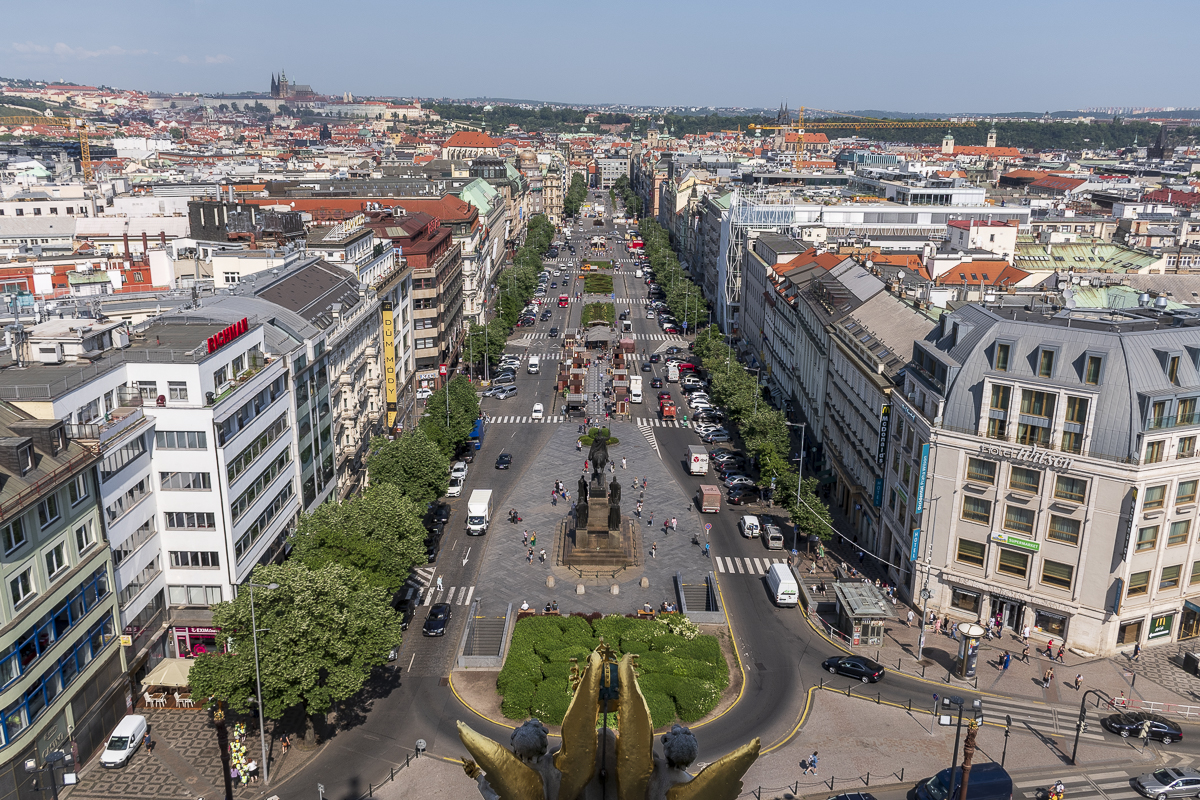
Wenceslas Square has been an important gathering place for demonstrations, protests, and celebrations throughout Czech history. The first Czechoslovak Republic was established here in 1918, following World War II. It is the second largest square in Prague and is considered to be the main square, even though there is no official one.
Many of the buildings around Wenceslas Square are architectural masterpieces in a mix of Art Nouveau, Baroque, Neo-Classical and many more styles, making it worth a visit. The historic National Museum at the top of Wenceslas Square stands in striking architectural contrast to the Brutalist New Building. The museum houses a vast collection of artefacts, including works of art, historical documents, and scientific specimens from prehistory to the present.
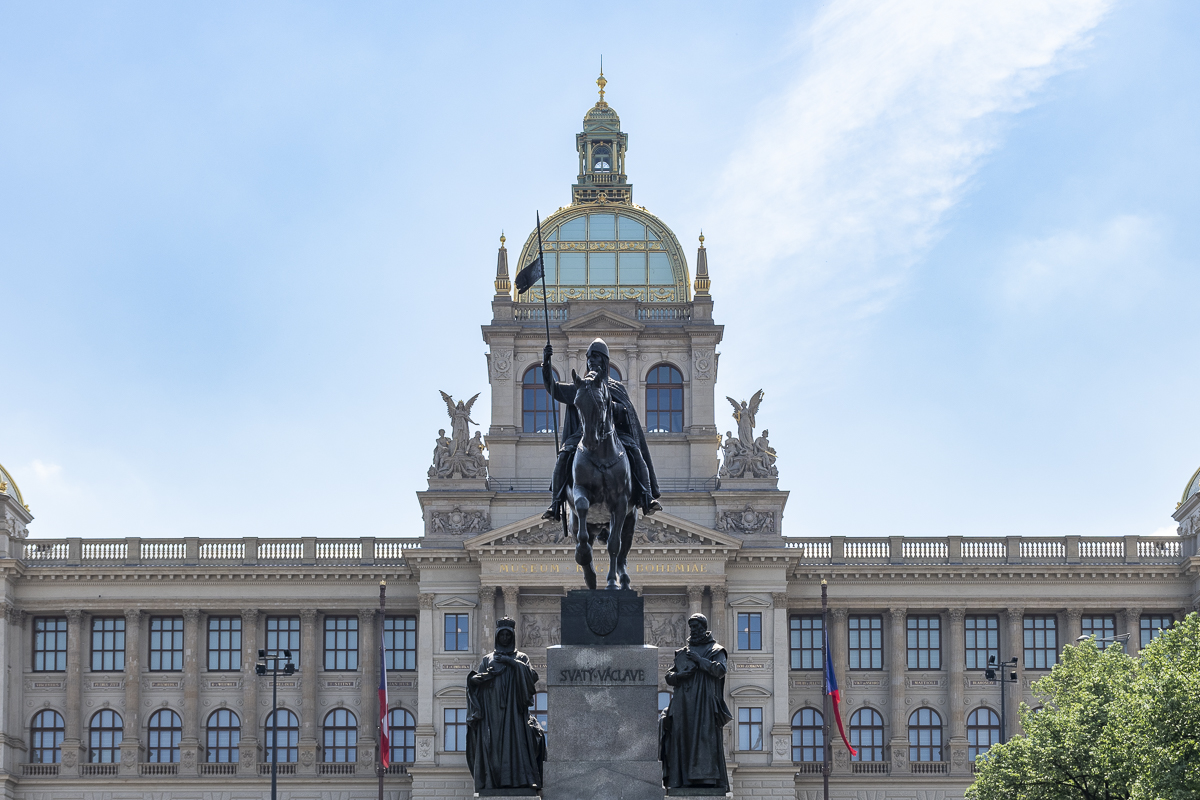
Another interesting dominant is the statue of St. Wenceslas, the patron saint of Czech lands, which stands at the top of the square. It is an artwork by sculptor Josef Vaclav Myslbek.
Nowadays, Wenceslas Square serves as the city’s commercial and administrative centre, housing cinemas, theatres, banks, hotels, restaurants, dozens of shops, administrative centres, and numerous nightlife options.
The statue of St. Wenceslas is a popular meeting place for locals, who refers to it as “under the tail” or “by the horse”.
7. National Theatre: The Nation For Itself
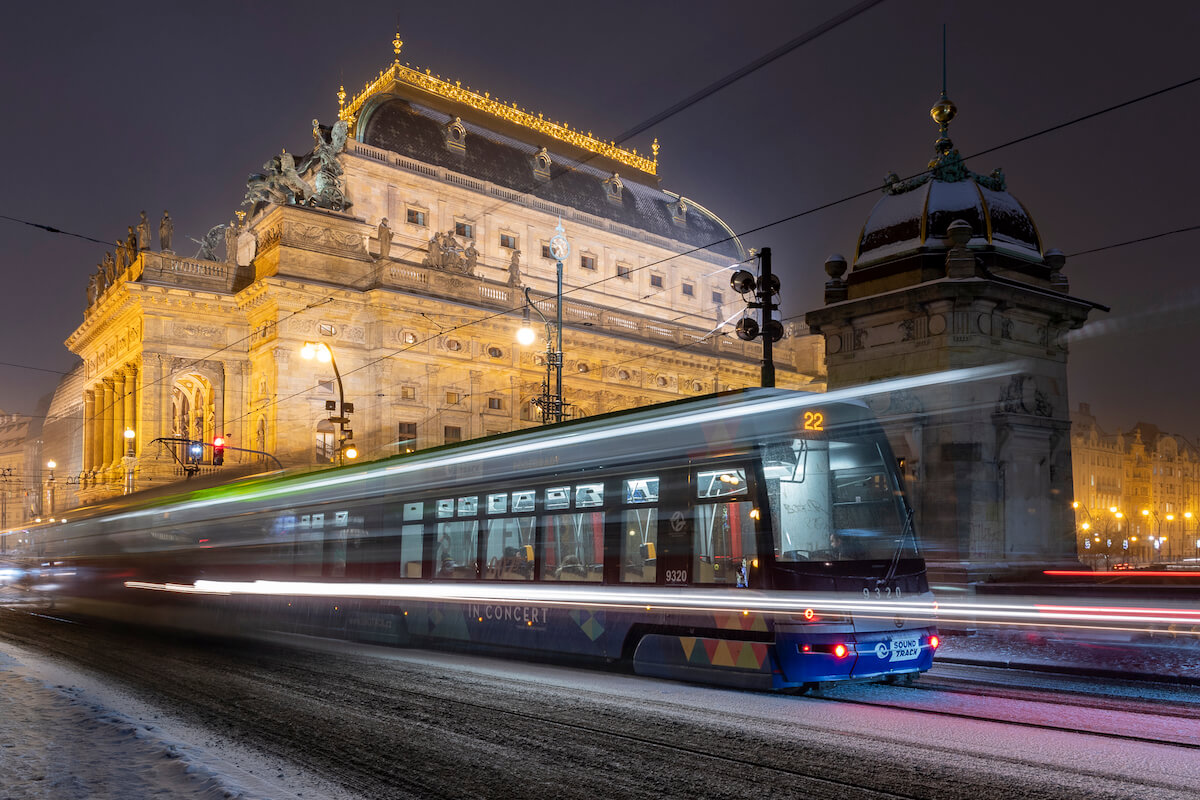
The National Theatre building (Narodni divadlo) is the most important Neo-Renaissance building in Prague, as well as the finest work of 19th-century Czech architecture. It is not only an architectural gem but also a significant national cultural monument.
The National Theatre holds a unique and exceptional place among all Prague buildings constructed at the time. It was built with funds from a nationwide collection, which is why an inscription above the stage reads “The Nation For Itself” (Národ sobě). It first opened in 1881 and reopened in 1883 after a devastating fire.
The National Theatre’s construction and decoration are masterpieces of 19th-century Czech art. The structure houses works by the most prominent Czech sculptors and painters of the time—the artists who are referred to as the National Theatre generation. Located between Prague Castle and Vysehrad Castle, the theatre offers a beautiful panoramic view of Prague from the Vltava river bank.
The extensive reconstruction of the theatre, as well as the construction of a new building known as “The New Scene” (Nova scéna), was completed in 1983. The New Scene was built in a brutalist style, with a façade made up of thousands of glass prisms. It stands out in stark contrast to the Neo-Renaissance National Theatre.
The magnificent National Theatre building offers a one-of-a-kind combination of history, culture, and artistic excellence that is sure to leave an indelible impression. A visit to a theatre performance of a drama, opera, or ballet, combined with the beautiful spaces of the theatre, creates an unforgettable experience.
Are you planning your trip to Prague yet?
Prague is truly a city like no other, brimming with history, culture, and charm. Prague has something for everyone, from the ancient castle perched high on a hill overlooking the city to the vibrant nightlife and delicious food scene. You’ll get a taste of what this incredible city has to offer by visiting the top 7 most famous attractions in Prague, and you’ll undoubtedly be left wanting more. So pack your bags, book your ticket, and get ready to fall in love with one of the most beautiful cities in Europe.

